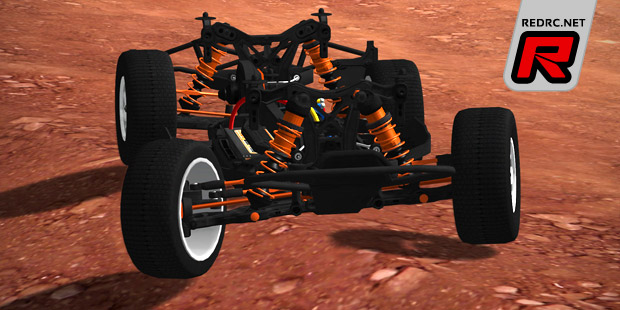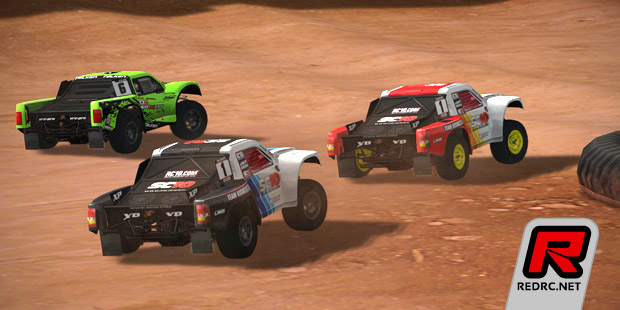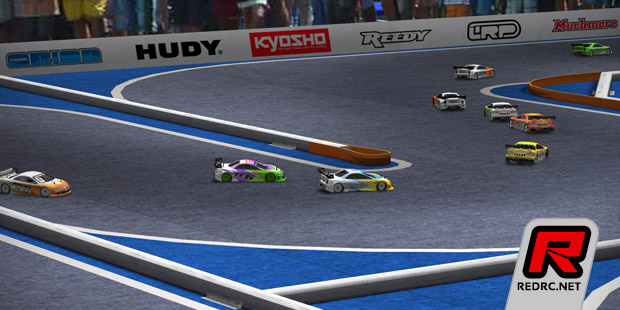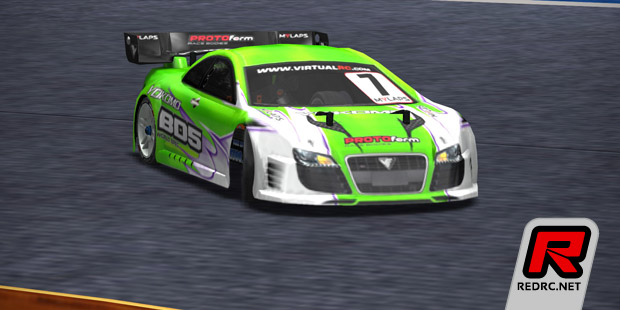VRC Pro Column – 3DS support

This month’ VRC Pro Column is all about suspension dynamics and E-sports. In August VRC Pro released an update on the physics engine with 3DS support. 3DS stands for 3 Dimensional Suspension (geometry and physics) and thought VRC Pro was all 3D already some things have changed. The chassis of a car is defined by its geometry and physical properties. The geometry describes the suspension layout, the wheelbase and track width, centre of gravity, positions of shocks and anti-roll bars and many more. The physical properties describe how heavy the chassis is, the inertias of the whole drive train and wheels, and in fact of the complete chassis, yaw moment for rotation, pitch for forward rotation and roll for rotation around the centre line of the chassis. The geometry and physical properties combined determines how the car handles. With all this information the physics engines calculates several hundred times per second what forces are generated in the suspension and how much grip each of the tyres produces.
Now this sounds maybe quite simple but VRC physics engineer Todd Wasson has spend the last 12 years optimising the physics engine to make the car behave and feel more realistic with every update. Up until this year the suspension geometry was lay out as a 2D model. And although this has worked well with the on-road cars and even with the short course truck, the 2D model would get VRC in trouble with open wheel buggies where the suspension and shocks are very visible and need to be fully animated for realism. The only option was to layout the whole suspension system in 3D, so that the moving parts would be moving exactly as they should when the suspension is under load. Todd has been working on the new 3DS system since September 2012 and VRC Pro now introduced 3DS for the short course trucks. As the suspension movement is hardly visible in short course trucks VRC have skipped the animation because there is still some work to do in that area, but for sure the 1:8 nitro buggy will use 3DS geometry, physics and animation.

3DS also opens up a much more realistic approach on setup. For example, the toe angle is no longer changed by selecting another angle, but by changing the length of the tie or track rod. A full explanation of the 3DS system is available on the VRC World website including a video showing a fully animated suspension in action on a short course truck.
Computer set-up
With the introduction of 3DS VRC Pro has become a little more demanding on your computer, especially when doing multi-player and racing with opponents. VRC Pro suggest to go for an i5 or i7 Intel processor as the physics engine is demanding more from the CPU than before. On the graphics side VRC recommend anything with a benchmark of 2000 and more in the high-end graphics card chart here. More CPU power and more graphics power means higher frame rate, better graphics and better control response.

Free-to-Play
Since Free-to-Play was introduced in June 2013 the VRC Pro membership has exploded to a massive 50.000 members. At the peak hours you can find 200 to 250 members racing VRC Pro and doing multiplayer sessions. With five free car classes and eight free tracks the free-to-play concept offers you a lot of virtual RC racing absolutely free, as often as you like, as long as you like. All the features of VRC Pro are available to free-to-play users: racing events, time trials, practising with opponents and multi-player. You can race VRC Pro with a gamepad or joystick controller, but if you want to use your own radio to control VRC Pro then all you need is a €10 ($13) USB adaptor. The USB adaptor works with all radio brands and types.

VRC Pro E-sport
With thousands of racers racing online events each month VRC Pro is turning into a real E-sport platform. E-sport stands for Electronic sport and recognises the sport achievement in game or simulator competition. So what’s the key difference again between the physical and virtual sport? In physical RC racing you need to have a real car, go to the track and work on your car to get it on the starting line in top-notch racing condition. That part is removed from the virtual sport. The focus in VRC Pro is on driving and racing, and not on wrenching. Other than that virtual RC racing is remarkably similar to real RC racing: you watch your car driving around a track and control it with your radio. This is exactly the same in VRC Pro and that is why racers experience virtual racing as intense as real RC racing. Doing well in VRC Pro gives you the same rush and satisfaction as the real thing. It’s the easiest and cheapest way to get more track time. And when you go to race your real car you will notice that you have gained confidence and speed by using VRC Pro. Real and virtual go hand in hand, both are serious sports.
Source: VRC [vrcpro.com]




